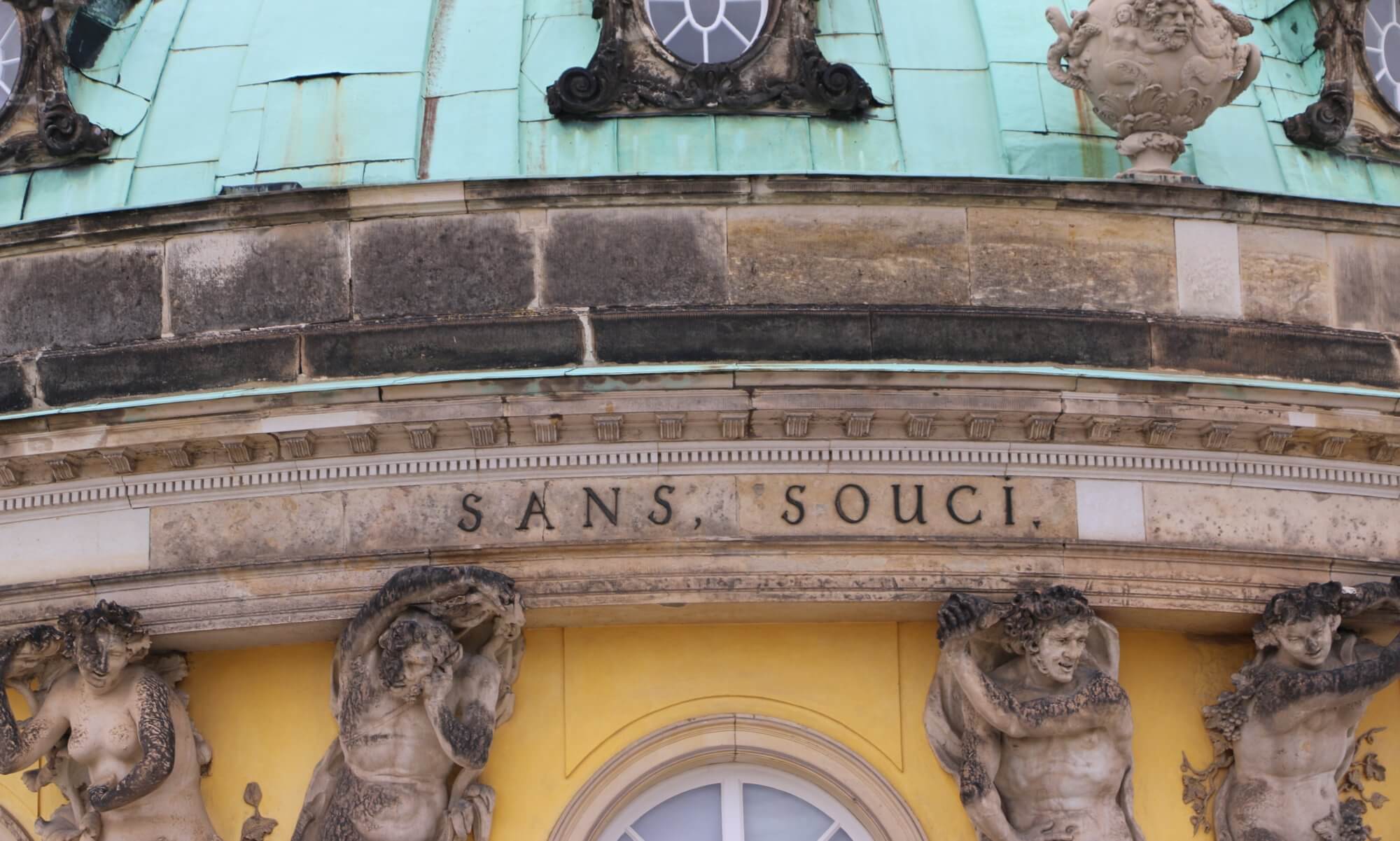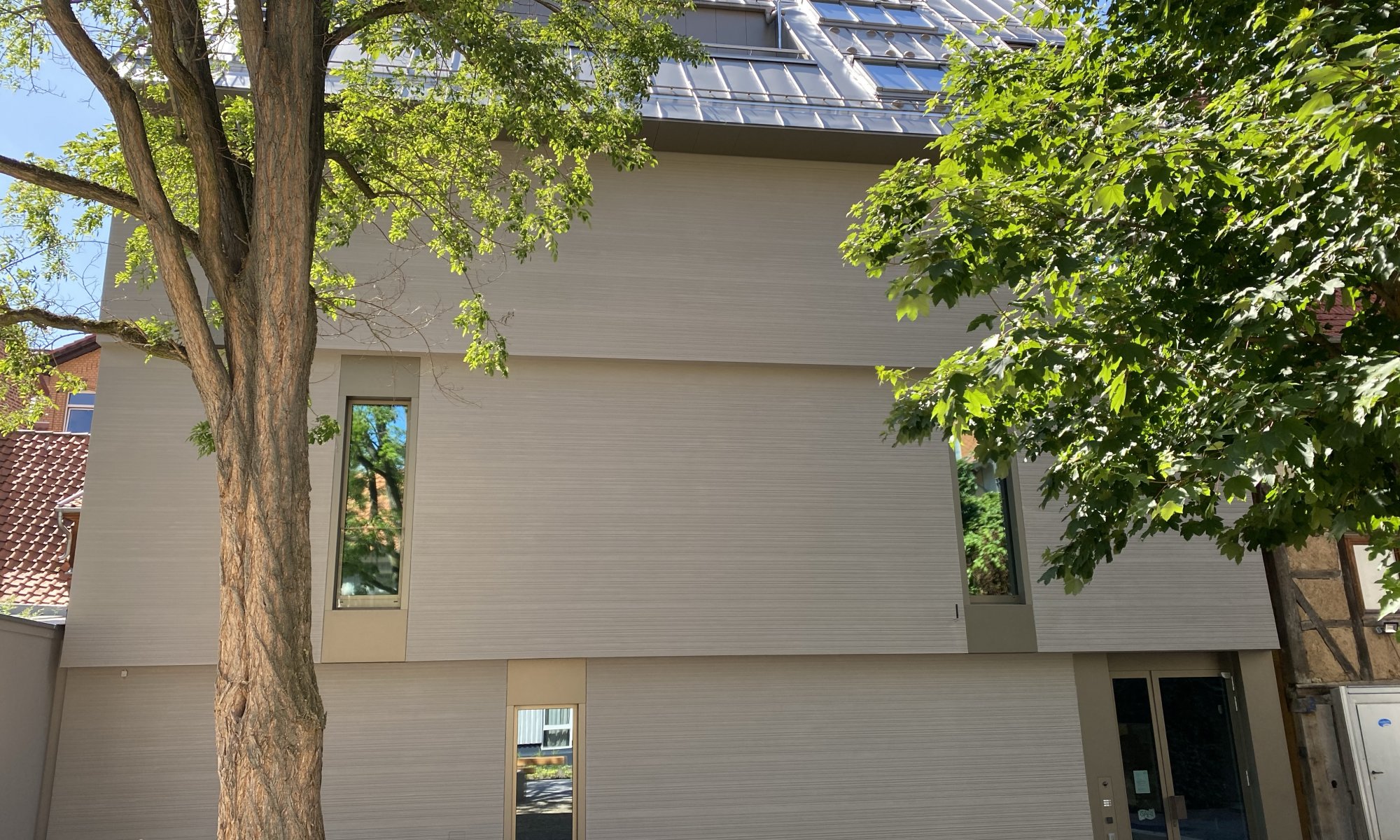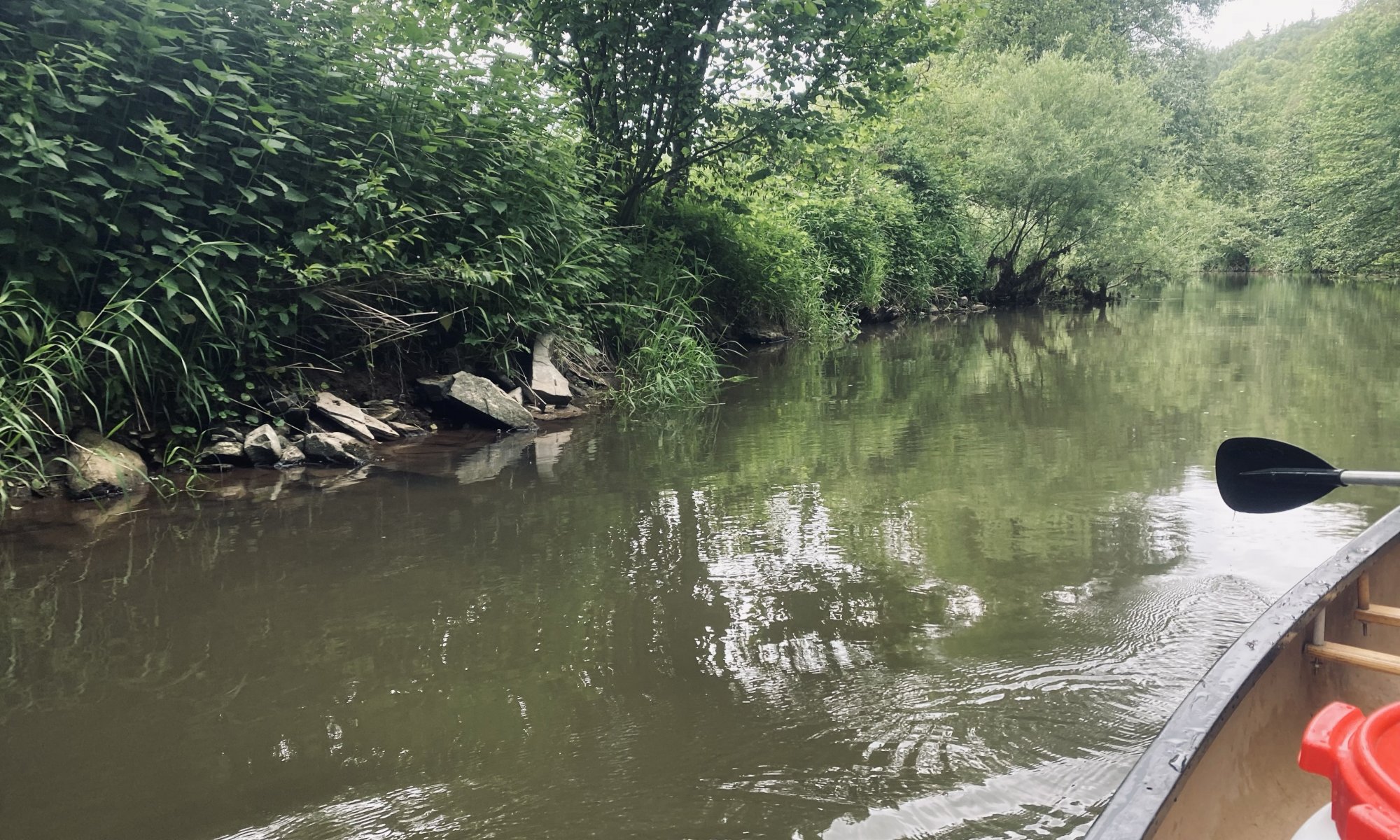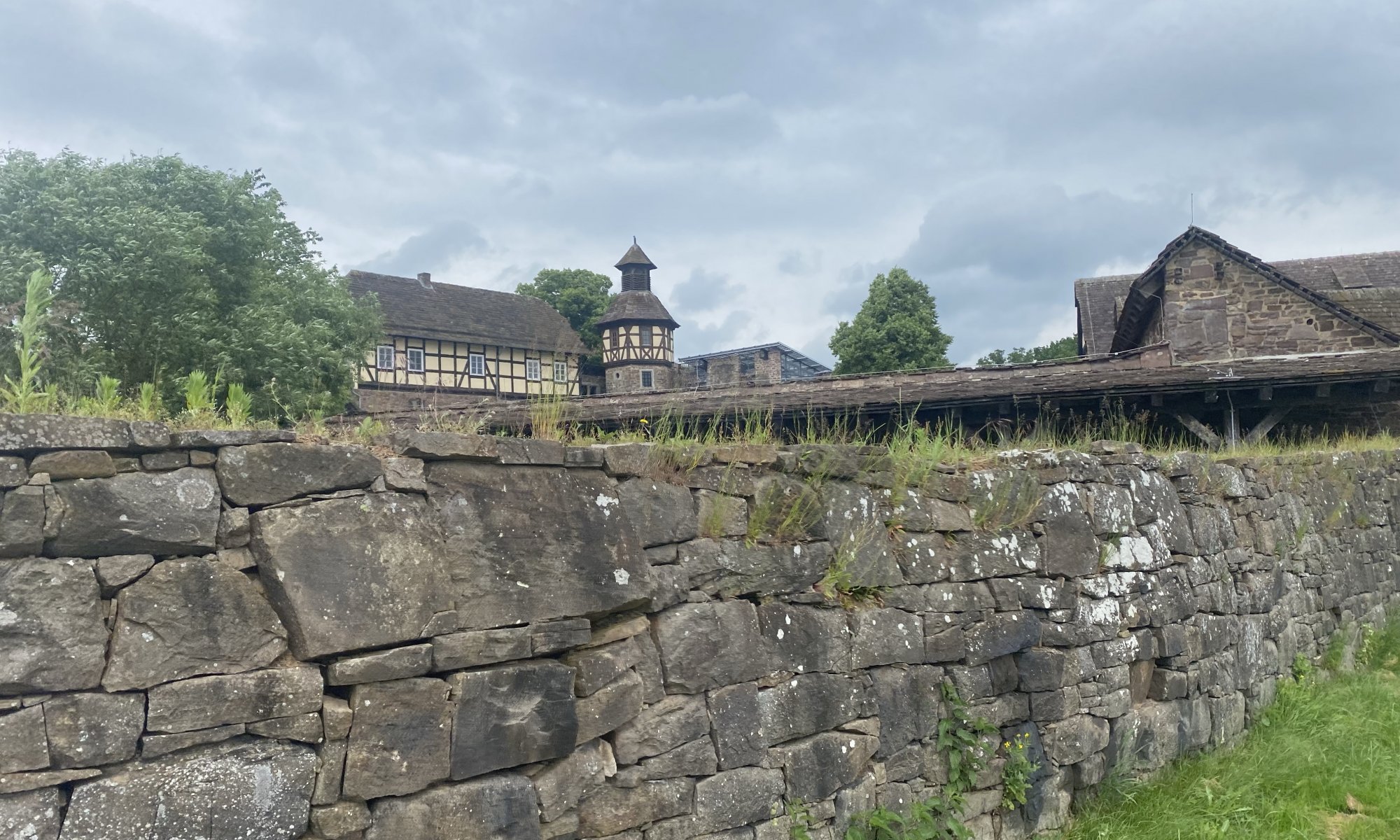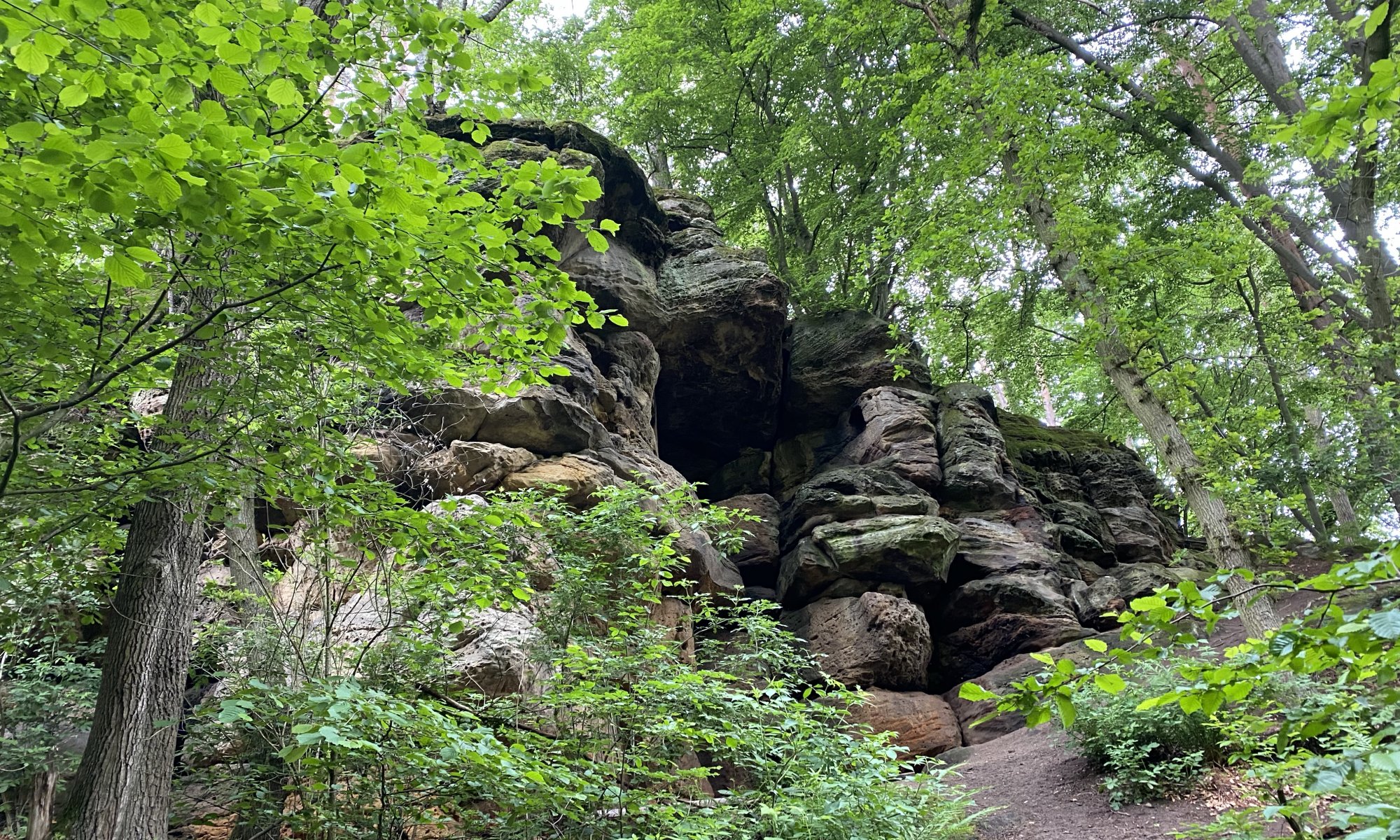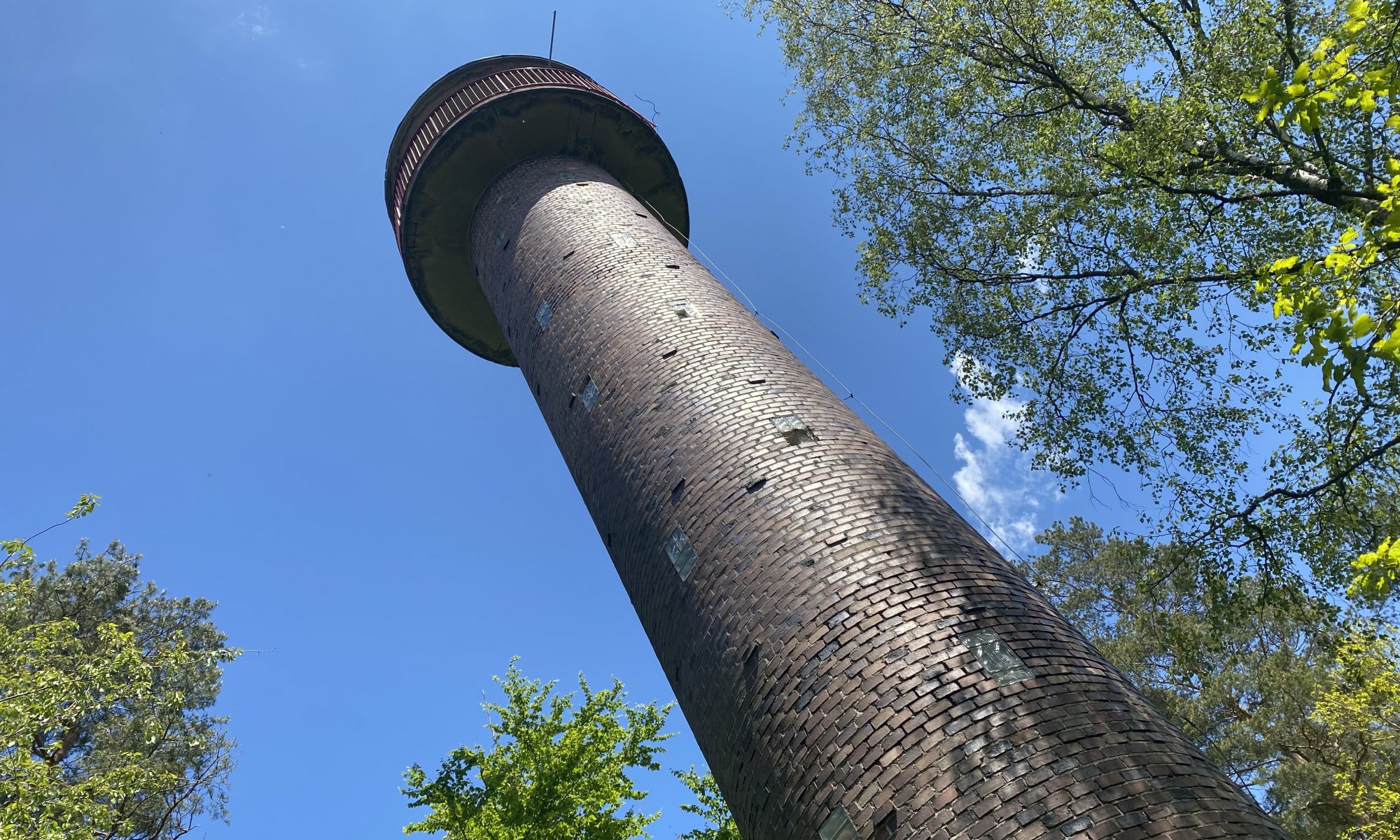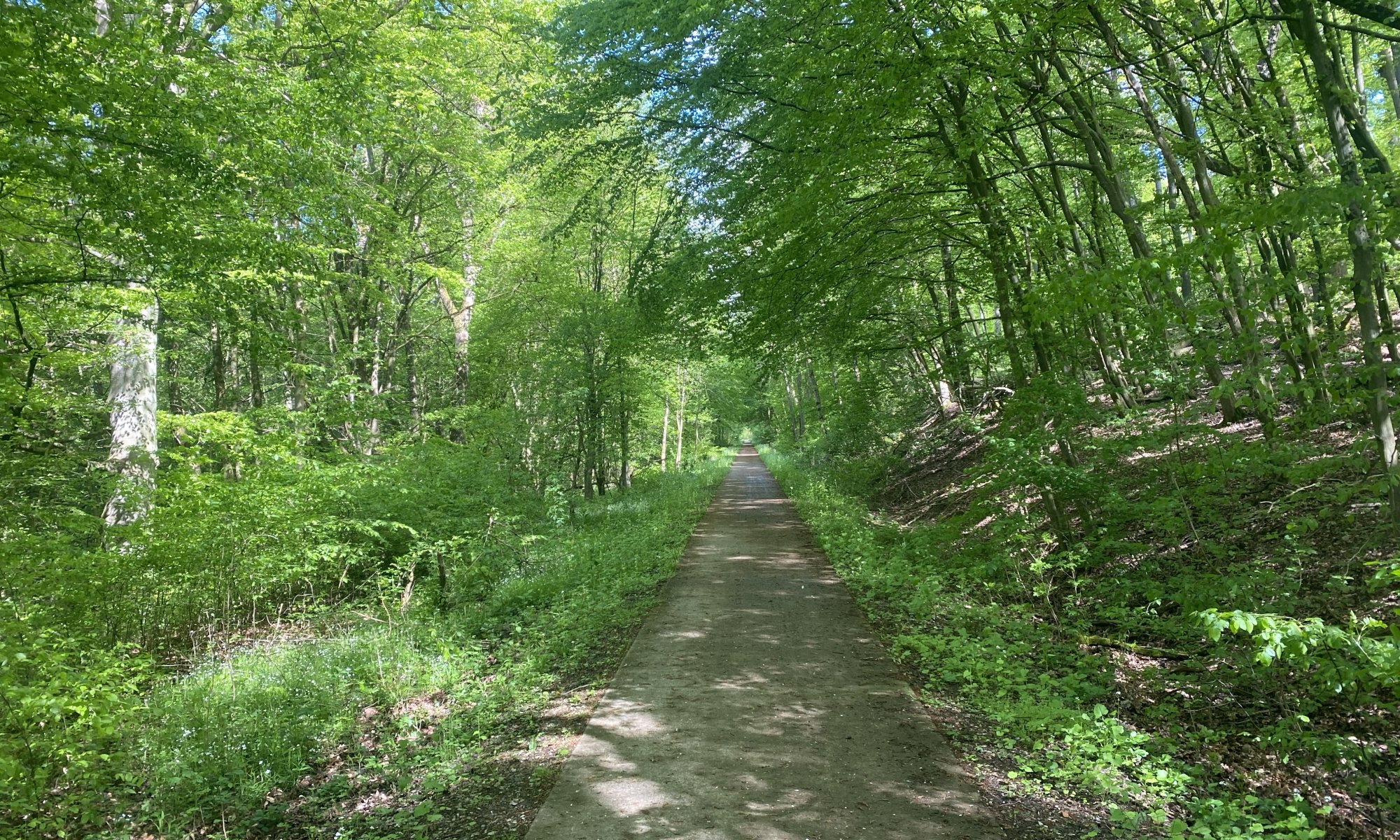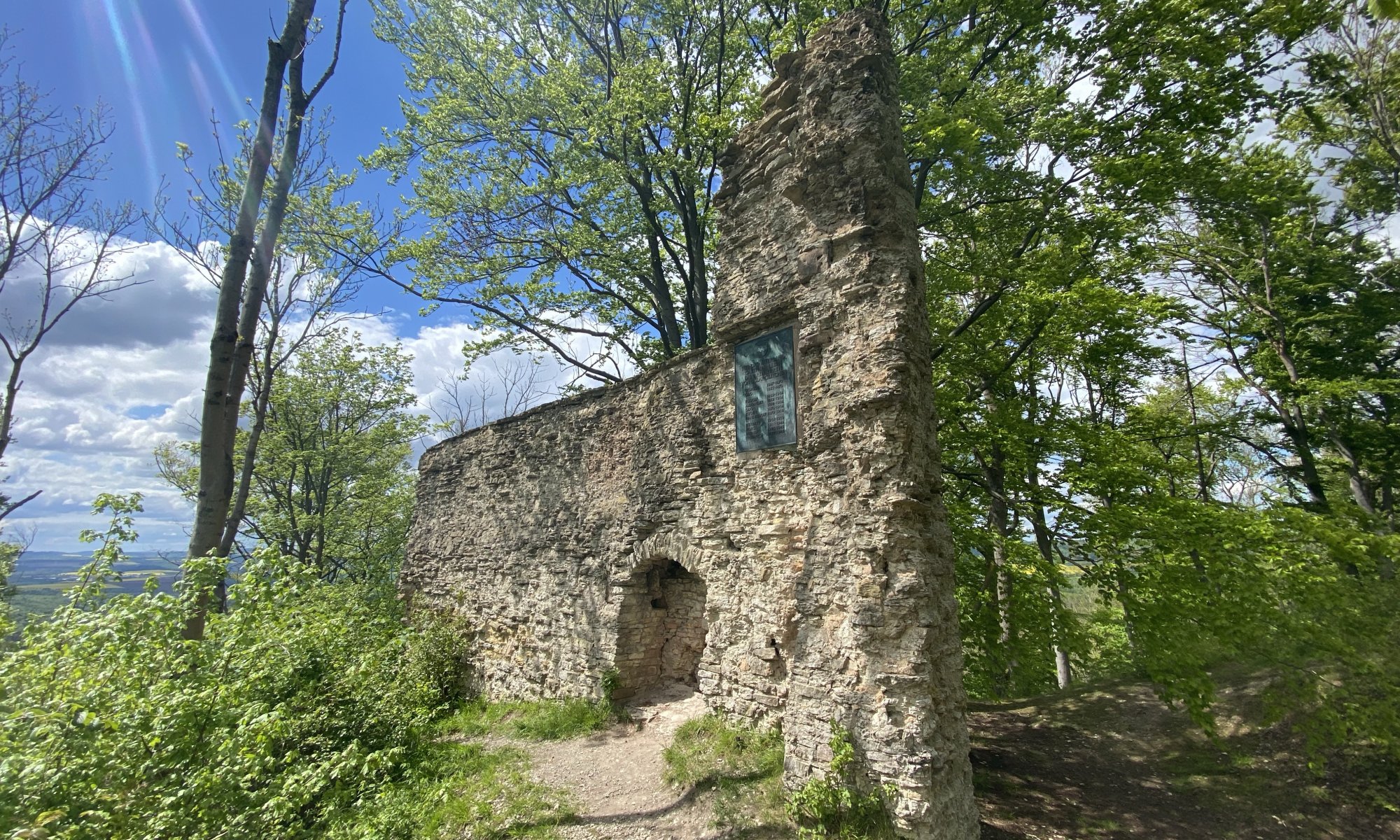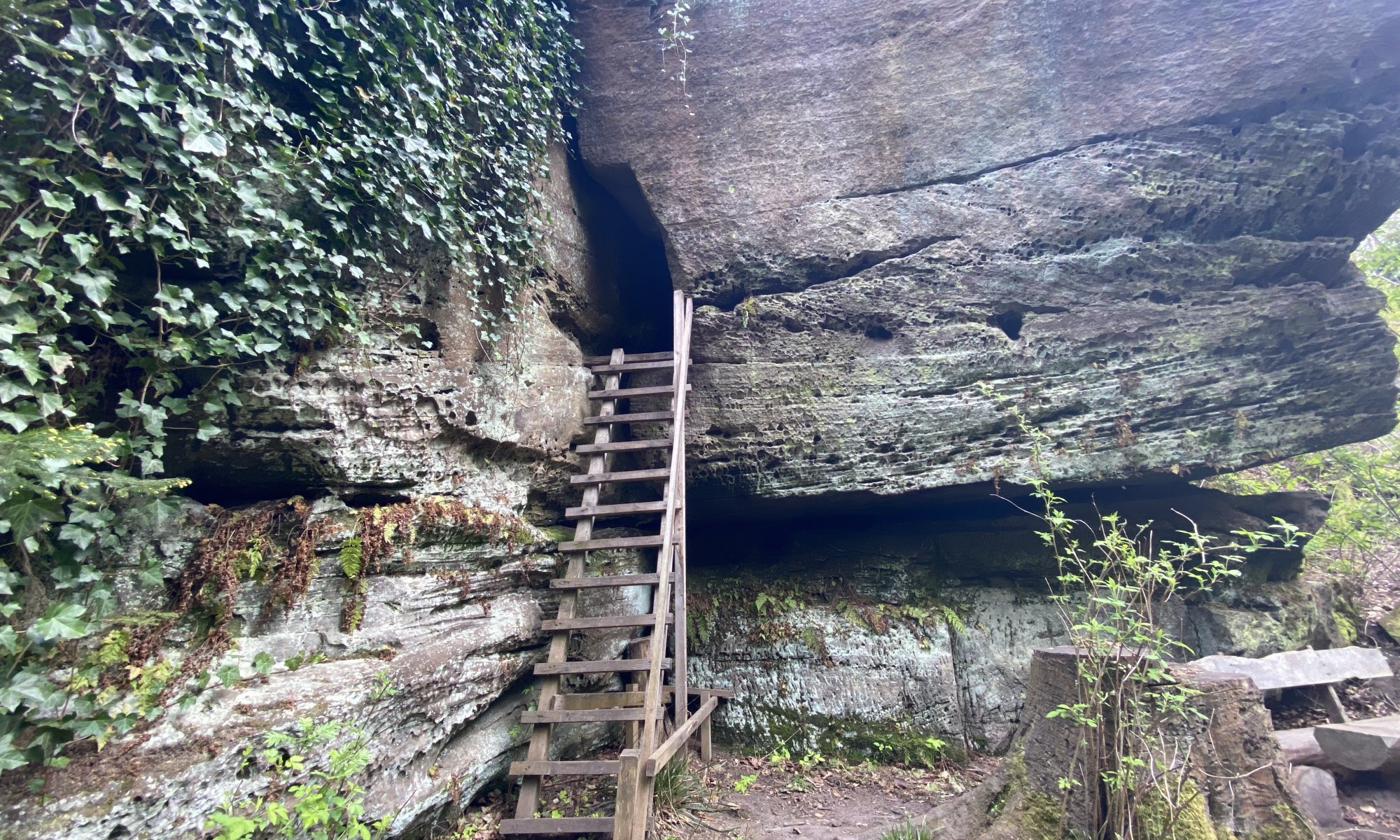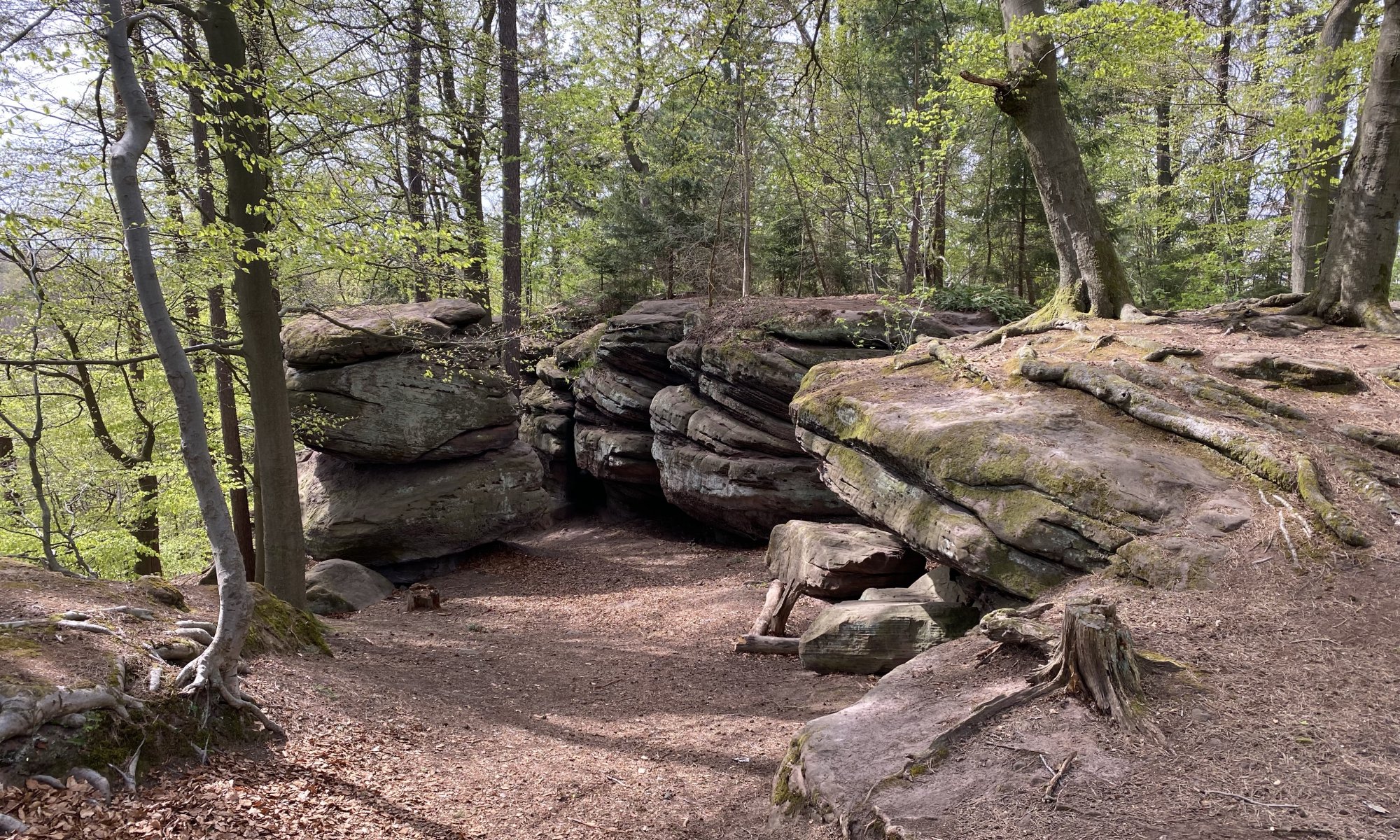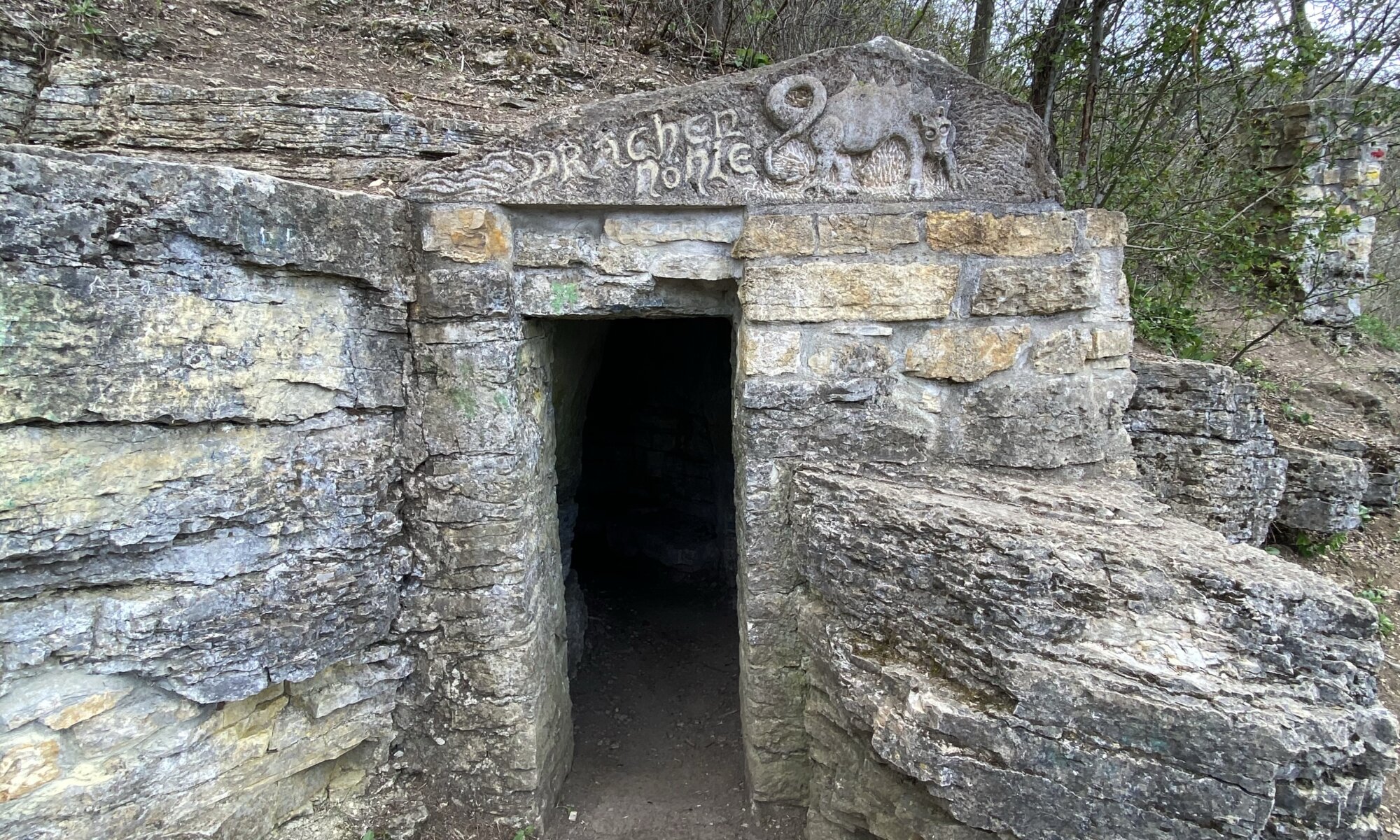Göttingen didn’t have many museums and art exhibition halls in the past. That started to change in 2008 when publisher Gerhard Steidl and mayor Wolfgang Meyer presented the idea of the Kunstquartier (art quarter, KuQua) with an art exhibition place at its heart: the Kunsthaus. In 2021 this place for exhibiting works on paper, photography and new media was finally opened and now attracts national and international visitors.
Continue reading “Kunsthaus”Canoeing on the Diemel
Travelling on a river by canoe is great fun. But it needs a lot of preparation: you need a boat, suitable equipment, a good point to start and most of all: someone who picks you up at your destination. Canoeing on the Diemel river is in contrast easy and well organized. You’ll get a canoe, a waterproof barrel, life jackets, paddles, and the phone number of someone to pick you up later.
Continue reading “Canoeing on the Diemel”Ostriches, cow tongues & rhubarb cake
The Wasserschloss Wülmersen is a wonderful place and a good destination for an excursion in the middle between Trendelburg and Bad Karlshafen. The name is a little bit misleading as it is not really a castle – it is a farm that dates back to the 12th century CE. In the past it was partially surrounded by a moat, therefore it received the name water castle or Wasserschloss.
Continue reading “Ostriches, cow tongues & rhubarb cake”Hollenkammer
I really love the sandstone formations hidden in the forests of Northern Hesse and Lower Saxony. You can explore caves, climb on top of them, touch the moss surrounding them or just enjoy the cooler temperatures close to these rocks on hot days. One of these places is the Hollenkammer, a cave close to Volkmarsen, Germany.
Continue reading “Hollenkammer”101 steps to heaven
If you’re travelling towards the Ofenberg mountain at Wolfhagen, Germany, and don’t know your target yet you might get a little bit afraid. The first thing you will see is the steep and high Isthaberg mountain and you might think: ‘That’s not what I’ve agreed to‘. But don’t worry: the Ofenberg is also steep but not as horrible as this vast mountain.
Continue reading “101 steps to heaven”Kassel & Göttingen: a roundtrip by bike
Göttingen and Kassel are cities that are only 50 km apart and could form a nice region – if they wouldn’t have been part of different kingdoms in the past and now different federal states (Lower Saxony and Hesse). I firmly believe that they will be connected more in the future and first tendencies towards this can already be seen.
Continue reading “Kassel & Göttingen: a roundtrip by bike”Die Gleichen
Fields of wild garlic, two mountains, two castle ruins and amazing views – what does one need more for a nice excursion? If you’re in the mood for climbing a 432 meters high mountain duo and exploring ancient ruins – then make your way for the Gleichen at Gleichen, Germany.
Continue reading “Die Gleichen”Hurkutstein
The lower German verb ‘hurkuzen‘ meaning ‘to hide away‘ is very much unknown today – but it gave the name for a nice sandstone formation in the Reinhäuser Wald (Reinhausen forest) near Bremke belonging to Gleichen. Within the rock, you will find a man-made cave at a height of 3 meters in which you can climb via a wooden ladder. Hide for a while but afterwards don’t forget to explore the rest of the region.
Continue reading “Hurkutstein”Natural playground
Deep in the Reinhäuser Wald (Reinhausen forest), you can find the Jägersteine or Jägerstein (hunters stone), an impressive sandstone formation with different small caves to explore, passages to pass through and crevices to jump over. It’s a lovely hiking destination and a good place to just hang around and play a bit in nature.
Continue reading “Natural playground”Inside the dragon’s lair
What to do if you’ve got too much money and feel a little bit bored? Just build your own medieval castle! The former district administrator Ludwig von Buttlar ordered the reconstruction of the Wolfhagen castle on the Graner Berg (a mountain named after the former village called Gran) in 1910 – and he paid for it with money from his own pocket. Even today you can still visit the two towers standing next to an airfield for gliders.
Continue reading “Inside the dragon’s lair”